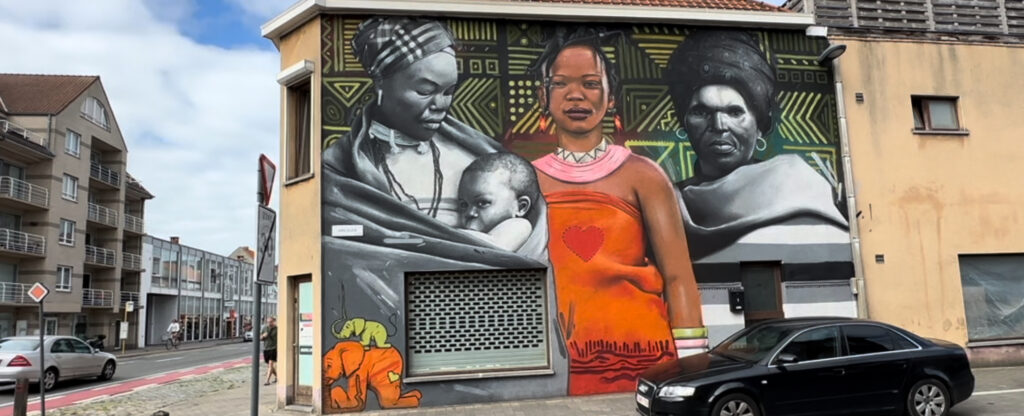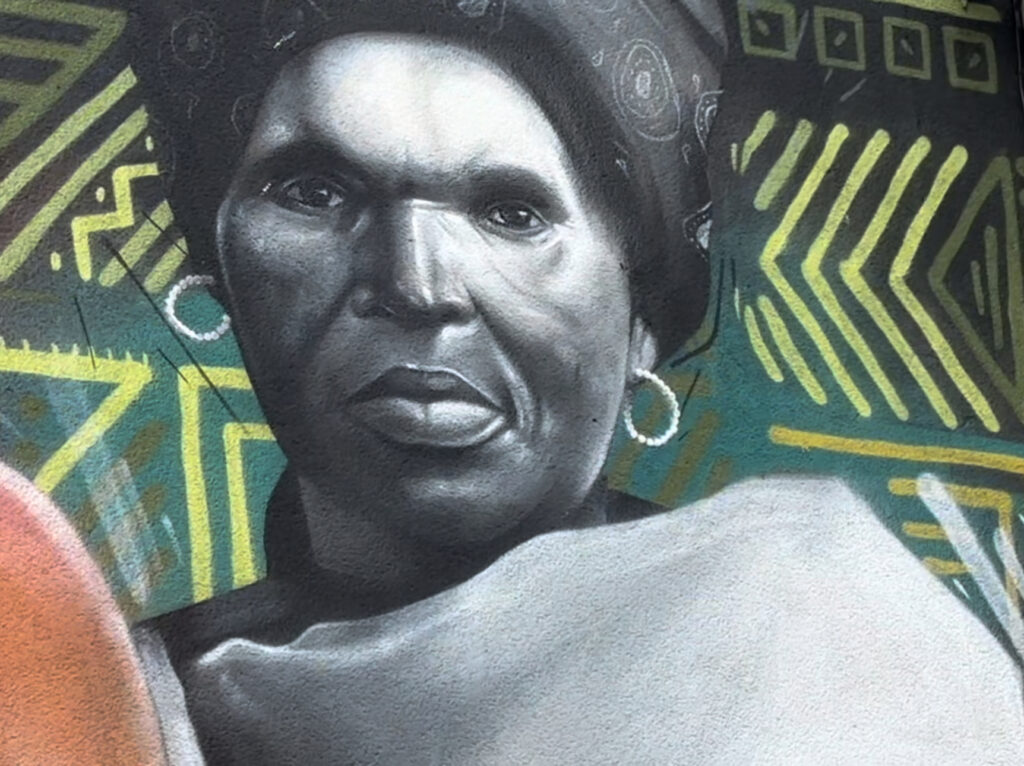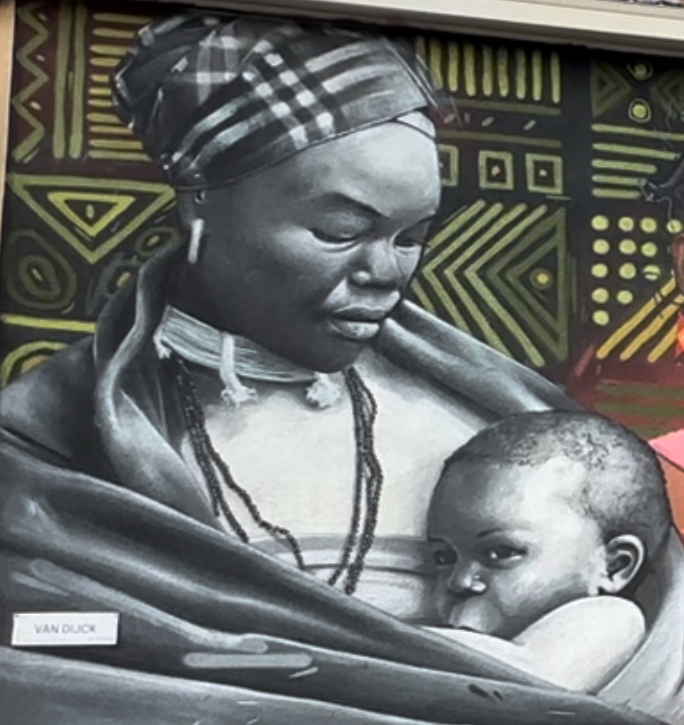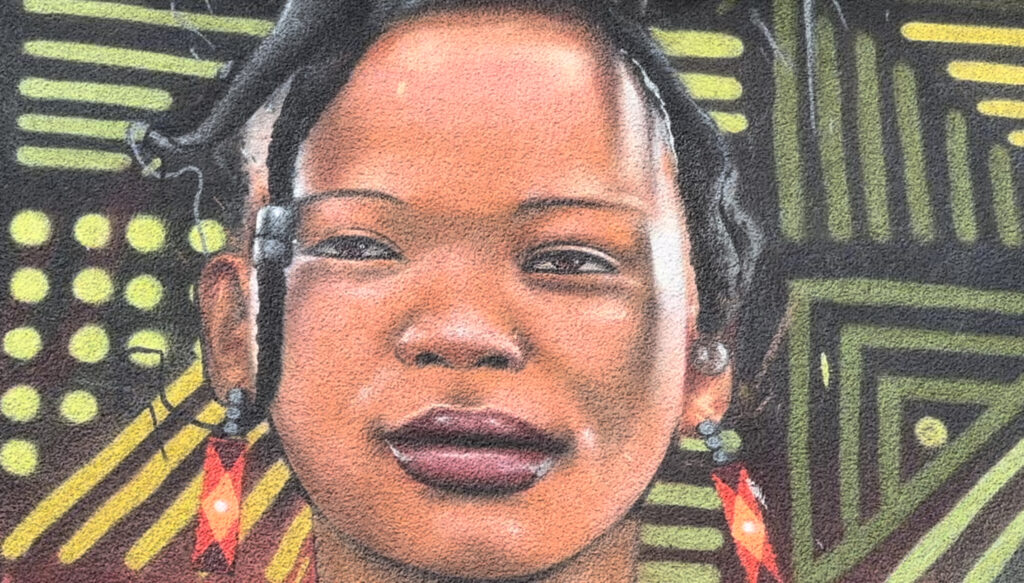
Street Art is defining and redefining contemporary communities around the world. Of the diverse use Fine Artists are putting the art form to, the ones that appeal to me the most are cultural-identity expression and social-political commentaries or activism if you like.
When Tonia and I migrated out of Nigeria and made Ostend, Belgium our new home, Africans, and non-Belgians in general, were barely seen nor heard in everything and everywhere. But all that have gradually and incrementally been changing. This is to our delight because the moment the kids started arriving, we realised that they did not ask to be born here. We brought them into the world here. This is their natural home. If we were going to simply sit back and lament about the lack of intercultural awareness, not to talk of racism, and do nothing to change beliefs, they would grow up here and meet the same situation that we met. Is that not a parental failure in some ways?
When we signed up as volunteers and joined Réginald Moreels to form Ostend’s first interracial community organisation, Jakoeboe vzw, of which I went on to become its founding President, it was an intentional decision. Our message was: let us bring cultures together, to get to know one another better, communicate and relate better. When I took up a course of study of Management in the Social Economy and focused my research on the use of cultural products as means to tackle cultural conflicts, for intercultural cohesion building, again it was an intentional decision that culminated in the establishment of the Exotic Kitchen. This was a project under The Global Village, that served as Ostend’s first intercultural centre with fusion kitchen & catering, manned by the new Belgians who had made Ostend their new home. All of these in a social profit context.

The Exotic Kitchen became a home for that lonely migrant with passion for culinary art but no avenue to express it beyond his or her tiny family unit, if there is a family. They could cook their national dishes and curious Ostenders could discover and enjoy these new meals and get to have conversations with the cook about their country, people, culture, life in Belgium, you name it. And gradually walls of fear are being broken down and bonds of friendships replacing them.
I am not saying that we are where we ought to be, but we are on the right path in recognising that inter-culturality is our reality of today. If anything, our cities will get more, not less culturally diverse than in the coming years. We can choose to be in denial of this inevitability or accept it and figure out ways to manage our city’s interplay of cultures effectively and efficiently.
Some of us that are more courageous and daring but not necessarily more intelligent than our forebears, again made the intentional decision to embrace politics as a tool to register our presence, get our voices heard, accentuate the things that are working well while working from policy and project angle, to change the wrong beliefs and sometimes outright racism. Those massages resonated with many hence when I joined party politics almost 18 years ago and told the voters that together with them, I would work to manage the intercultural reality facing us, they believed me, and I got elected.

When I spot Street Arts that identify with and give expression to Cultural Diversity and Identity, they give me optimism that we are not going back to the dark times of denialism of our intercultural reality. The Street Arts are reflecting the cultural and social identity of Ostend. These Fine Artists use this art form to celebrate local heritage, commemorate events, and honour significant figures or landmarks.
Some make in unique ways, some compelling social and political commentaries with their Street Art, expressing implied political opinions sometimes to Far-Right elements that we should all be in it together. In many ways, the Street Artists are equally about community engagement and empowerment. Their projects often involve collaboration with local communities, fostering a sense of ownership and pride. Community-driven art projects do engage youth and marginalised groups, providing them with a creative outlet and a voice.

I have no idea who the Street Artist is whose work has caught my fancy. And he did not sign it off, except I missed it. But he spoke to me from different dimensions. His painting of three African women and a child plays a multifaceted role. To me it serves as a vehicle for cultural expression, social commentary, adds to urban renewal of our beautiful Ostend, and it engages our diverse communities. The impact of Street Art goes beyond mere aesthetics. We are in dialogue now because it fostered the dialogue. Above all Street Arts are transforming our public spaces into vibrant cultural hubs.